Opinion
The day the editor stood in the dock!
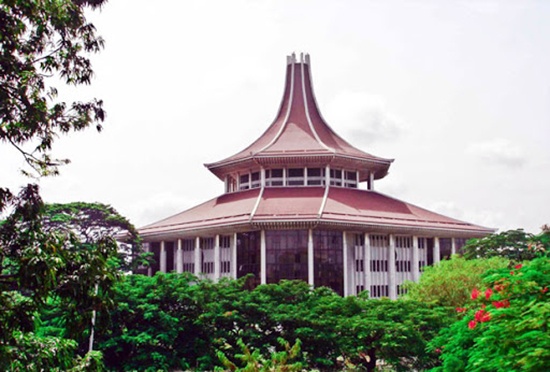
(With Contempt of Court cases making news recently, we publish today an article written by E.C.B. Wijeyesinghe, a famous journalist of yesteryear on the Contempt of Court case against the Editor of the Daily News in the nineteen thirties)
One of the occupational hazards of the editor of a newspaper is to suffer for other people’s sins. There is, of course, a sacred precedent for this kind of undeserved torture: but you cannot put up that plea in mitigation of the punishment when you stand face to face with the majesty of the law. In case you are eager to know what I am driving at, let me say at once that this is just a preamble to a story about an illustrious editor of the Ceylon Daily News who escaped by the skin of his teeth from spending a holiday in the Welikade Prison.
 His name is Herbert Hulugalle, who joined the ‘Daily News’ in 1918, when the paper was a toddler and helped the proprietor, D.R. Wijewardene for 30 years to tend it until it grew up to be a mighty giant. For 17 of these 30 years he was the Editor and made the newspaper the most powerful driving force towards Ceylon attaining political freedom. He severed his connection with journalism only after Ceylon became independent and then proceeded to shine in other fields. Hulugalle’s monumental work ‘The Life and Times of D.R. Wijewardene” is virtually the most authoritative and gripping narrative of perhaps the most exciting period of our history.
His name is Herbert Hulugalle, who joined the ‘Daily News’ in 1918, when the paper was a toddler and helped the proprietor, D.R. Wijewardene for 30 years to tend it until it grew up to be a mighty giant. For 17 of these 30 years he was the Editor and made the newspaper the most powerful driving force towards Ceylon attaining political freedom. He severed his connection with journalism only after Ceylon became independent and then proceeded to shine in other fields. Hulugalle’s monumental work ‘The Life and Times of D.R. Wijewardene” is virtually the most authoritative and gripping narrative of perhaps the most exciting period of our history.
BUSYBODY
The seed of the trouble in this case was eventually traced to some busybody in the Law Library, who wanted to ingratiate himself with Wijewardene by feeding him with what he thought was a juicy tit-bit. Forty years ago, as now, the Law Library was a sort of clearing house for gossip and the younger practitioners waiting for briefs revelled in stories which had the slightest odour of scandal. They gave flesh to the bare bones of the naughty rumour and embellished it in such a way that there was a big gap between the authorised version and the revised version that was circulated in the corridors of Hulftsdorp. The story that reached the ears of Wijewardene, however, lacked the usual salacious sauce. It was built up on a much more serious theme, namely, that the Supreme Court judges were giving themselves holidays to which they were not entitled. It was a report without any foundation whatsoever but it was good material for a powerful editorial.
TROUBLE
Wijewardene soon got going. He was not the man who allowed the grass to grow under his feet. The Lake House telephone bells started ringing, but the Editor, Herbert Hulugalle, happened to be away. Wijewardene got hold of the next best man in the office to give expression to his indignation. He happened to be J. L.Fernando, who for many years wrote the Parliamentary summary and the weekly political notes for the ‘Daily News.’ From the tone of the Chief’s voice, J. L. Fernando knew that something strong had to be written, and that, quickly. Fernando, who was an Oxford man, put his best foot forward and produced the stuff. To make matters worse from the legal point of view, he gave it the somewhat sarcastic but sinister title ‘Justice on Holiday.’ Then everybody went to bed, happy that the day’s good deed had been done.
TOO LATE
But the euphoria did not last long. At the bewitching hour of midnight something stirred. It was Wijewardene’s conscience. The Chief, whose journalistic instincts for self-preservation were highly developed felt there was something wrong somewhere. He went back to bed with an uneasy feeling, but woke up at half-past four in the morning when the offending sentences began to haunt him again and again. According to what the Boss told Hulugalle, his first impulse at dawn was to take up the telephone and have the editorial altered. But it was too late. Before the cocks began to crow Wijewardene was consulting his lawyer friends to prepare a defence. Shortly afterwards, the fat was in the fire. There in the dock stood the meek and mild Herbert Alexander Jayatilleke Hulugalle, the innocent victim of circumstances, perhaps paying the penalty for some sin he had committed in his previous birth. As the Editor of the ‘Daily News,’ he had to take the full responsibility for what appeared in his paper. He knew it, the proprietor knew it, the leader writer knew it and, above all, the Judges knew it.
FULL COURT
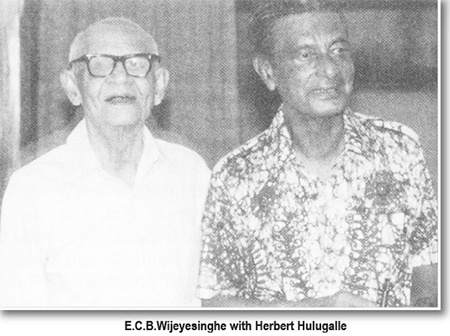 There he was, arraigned for Contempt of Court before a Full Court which is an awesome thing under any circumstances. All the King’s Counsel and all the King’s men, down to the humblest Fiscal’s peon, came to watch the show. In Hulftsdorp and the precincts it was like a Roman Holiday with a harmless Christian being thrown to the lions. The Court consisted of the Chief Justice, Sir Sydney Abrahams, Mr. Justice M.T. Akbar and Mr. Justice F.H.B Koch. Wijewardene retained two of the most eminent practitioners at the Bar to defend Hulugalle. They were R.L. Pereira, K.C, and H.V. Perera, K.C. A better combination could not be found. When the talking began, it became apparent that Sir Sydney Abrahams was riled, not only by the editorial, but by an affidavit for the defence prepared by the great E.J. Samerawickreme, K.C. himself. That affidavit was so ingeniously worded that it sought to make excuses for the editorial without making a full apology. That annoyed Sir Sydney a little more. For the fact of the matter was that there was no defence whatsoever for the offending article. The judges had merely taken a vacation to which they were fully entitled under the Courts Ordinance, which the busybody at the Law Library had misunderstood.
There he was, arraigned for Contempt of Court before a Full Court which is an awesome thing under any circumstances. All the King’s Counsel and all the King’s men, down to the humblest Fiscal’s peon, came to watch the show. In Hulftsdorp and the precincts it was like a Roman Holiday with a harmless Christian being thrown to the lions. The Court consisted of the Chief Justice, Sir Sydney Abrahams, Mr. Justice M.T. Akbar and Mr. Justice F.H.B Koch. Wijewardene retained two of the most eminent practitioners at the Bar to defend Hulugalle. They were R.L. Pereira, K.C, and H.V. Perera, K.C. A better combination could not be found. When the talking began, it became apparent that Sir Sydney Abrahams was riled, not only by the editorial, but by an affidavit for the defence prepared by the great E.J. Samerawickreme, K.C. himself. That affidavit was so ingeniously worded that it sought to make excuses for the editorial without making a full apology. That annoyed Sir Sydney a little more. For the fact of the matter was that there was no defence whatsoever for the offending article. The judges had merely taken a vacation to which they were fully entitled under the Courts Ordinance, which the busybody at the Law Library had misunderstood.
CHIEF ACTOR
Sir Sydney Abrahams, the principal actor in the drama, eventually became a member of the Judicial Committee of the Privy Council. He was Chief Justice of Ceylon for three years from 1936 to 1939. Of Jewish extraction, he was one of a trio of brilliant brothers, all of whom excelled at Cambridge in studies as well as in athletics. Before he came to Ceylon he was Chief Justice both in Uganda as well as Tanganyika. As an athlete, he represented Cambridge against Oxford in the long jump and 100 yards for three years, and then went on to be chosen as the British representative in the Olympic Games at Athens and Stockholm. He was the World’s Amateur Long Jump Champion in 1913. An athlete of that calibre had never before adorned the Supreme Court bench of Ceylon and he was generally regarded not only as a great sportsman but as a good sport. But even sportsmen lose their temper when for no valid reason, people try to be funny at the expense of the highest tribunal in the land. All the judicial lions, however, were not in the mood to devour their victim, but their leader could not be restrained because the highest court in the land had been held up to ridicule on baseless grounds. It was the title of the editorial, ‘Justice on Holiday,’ that hurt more than the contents.
CONCESSION
As a mild concession to the “Daily News” which then took pride in describing itself as the watch-dog of the nation, the accused was unleashed for the moment and allowed to sit behind his defenders, which he did biting only his own nails or what was left of them. Money was of no consequence to Wijewardene when it came to a fight. He was always ready to do battle for the freedom of the Press and stand up for his staff. In this instance, however, he knew he was on a sticky wicket. Hulugalle was sentenced, without much demur, to pay a fine of Rs. 1000 and to “imprisonment till the rising of the Court.” The fine was paid promptly because Wijewardene had sent one of his two trusted men, P.C.A.Nelson or E.E.C. Abayasekera, (I forget which one), with a large bundle of currency notes to cover ten times the prescribed punishment, in case it was only a fine.
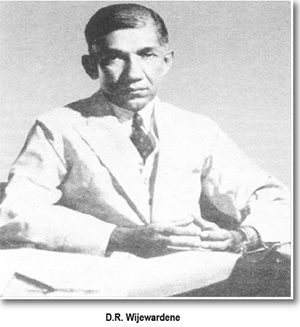 But the fly in the ointment was the second part of the sentence. Imprisonment is imprisonment, whether it is till the rising of the Court or the arrival of Doomsday. Wijewardene’s strategy was now confined to finding a face-saving device. He decided to appeal to the Privy Council in London and retained Gavin Turnbull Simonds K.C. with Hugh Imbert Hallett, K.C. as junior. On the very day that the appeal came up Simonds was made a judge of the Chancery Division of the High Court. This was just a stepping stone of the Lord High Chancellorship of Britain. Hugh Hallett, K,C, also rose to be a High Court Judge, Queen’s Bench Division. All of which goes to show, that as in Ceylon, the best legal brains in England were harnessed to save Hulugalle. But alas, Justice was not on holiday even in the Privy Council and the appeal was dismissed. When the record of the case came back to Ceylon, Hulugalle was hauled out of his editorial seat once more in order to serve his sentence.
But the fly in the ointment was the second part of the sentence. Imprisonment is imprisonment, whether it is till the rising of the Court or the arrival of Doomsday. Wijewardene’s strategy was now confined to finding a face-saving device. He decided to appeal to the Privy Council in London and retained Gavin Turnbull Simonds K.C. with Hugh Imbert Hallett, K.C. as junior. On the very day that the appeal came up Simonds was made a judge of the Chancery Division of the High Court. This was just a stepping stone of the Lord High Chancellorship of Britain. Hugh Hallett, K,C, also rose to be a High Court Judge, Queen’s Bench Division. All of which goes to show, that as in Ceylon, the best legal brains in England were harnessed to save Hulugalle. But alas, Justice was not on holiday even in the Privy Council and the appeal was dismissed. When the record of the case came back to Ceylon, Hulugalle was hauled out of his editorial seat once more in order to serve his sentence.
Luckily for him, he still possessed the black coat and striped pants in which he had taken his oaths as an advocate. Shaking off the moth-balls from these garments which he had not worn for fifteen years, Hulugalle slipped into the Supreme Court like a thief in the night, to take his punishment. Those who recognised him, wondered what he was doing in this strange attire. He sat among the advocates, poring over a New Law Report, but all the while serving his sentence till the rising of the Court. At the lunch interval the Registrar of the Supreme Court, Guy O. Grenier, an old friend, virtually took Hulugalle by the hand and led him to his sanctum where they shared Grenier’s sandwiches. Back in Court, Mr. Justice Poyser, the presiding judge, who had a keen sense of humour now seemed to be aware of the comedy of Hulugalle’s incarceration, as the accused was slipping in and out of chairs and pretending to be deeply absorbed in law books which he had not touched since he left the Law College, where Mr. Justice Akbar was one of his teachers. Poyser rose to the occasion. For some unknown reason he adjourned the Court much earlier than usual indicating the fall of the curtain on the case.
Poyser bowed to Hulugalle, Hulugalle bowed to Grenier and Grenier bowed to the Counsel, while the Court Crier shouted himself hoarse in a tone suggesting that justice will be done though the heavens fall. Hulugalle quietly proceeded to Lake House, where he received a warm welcome from his colleagues, but better still a substantial cheque from his Boss to compensate him not only for his pain of mind, but for the fine performance he had put up as an actor.
(From “The Good at their Best” Selected writings of E.C.B.Wijeyesinghe, Actor and Journalist)
Opinion
The policy of Sinhala Only and downgrading of English
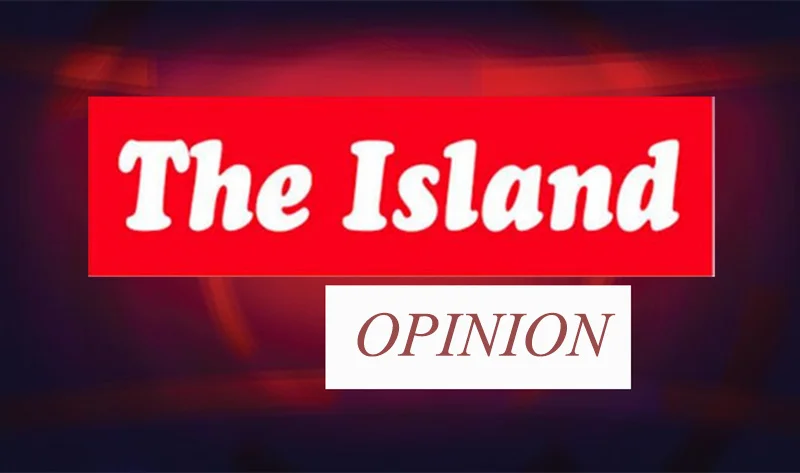
In 1956 a Sri Lankan politician riding a great surge of populism, made a move that, at a stroke, disabled a functioning civil society operating in the English language medium in Sri Lanka. He had thrown the baby out with the bathwater.
It was done to huge, ecstatic public joy and applause at the time but in truth, this action had serious ramifications for the country, the effects have, no doubt, been endlessly mulled over ever since.
However, there is one effect/ aspect that cannot be easily dismissed – the use of legal English of an exact technical quality used for dispensing Jurisprudence (certainty and rational thought). These court certified decisions engendered confidence in law, investment and business not only here but most importantly, among the international business community.
Well qualified, rational men, Judges, thought rationally and impartially through all the aspects of a case in Law brought before them. They were expert in the use of this specialised English, with all its meanings and technicalities – but now, a type of concise English hardly understandable to the casual layman who may casually look through some court proceedings of yesteryear.
They made clear and precise rulings on matters of Sri Lankan Law. These were guiding principles for administrative practice. This body of case law knowledge has been built up over the years before Independence. This was in fact, something extremely valuable for business and everyday life. It brought confidence and trust – essential for conducting business.
English had been developed into a precise tool for analysing and understanding a problem, a matter, or a transaction. Words can have specific meanings, they were not, merely, the play- thing of those producing “fake news”. English words as used at that time, had meaning – they carried weight and meaning – the weight of the law!
Now many progressive countries around the world are embracing English for good economic and cultural reasons, but in complete contrast little Sri Lanka has gone into reverse!
A minority of the Sinhalese population, (the educated ones!) could immediately see at the time the problems that could arise by this move to down-grade English including its high-quality legal determinations. Unfortunately, seemingly, with the downgrading of English came a downgrading of the quality of inter- personal transactions.
A second failure was the failure to improve the “have nots” of the villagers by education. Knowledge and information can be considered a universal right. Leonard Woolf’s book “A village in the Jungle” makes use of this difference in education to prove a point. It makes infinitely good politics to reduce this education gap by education policies that rectify this important disadvantage normal people of Sri Lanka have.
But the yearning of educators to upgrade the education system as a whole, still remains a distant goal. Advanced English spoken language is encouraged individually but not at a state level. It has become an orphaned child. It is the elites that can read the standard classics such as Treasure Island or Sherlock Holmes and enjoy them.
But, perhaps now, with the country in the doldrums, more people will come to reflect on these failures of foresight and policy implementation. Isn’t the doldrums all the proof you need?
by Priyantha Hettige
Opinion
GOODBYE, DEAR SIR

It is with deep gratitude and profound sorrow that we remember Mr. K. L. F. Wijedasa, remarkable athletics coach whose influence reached far beyond the track. He passed away on November 4, exactly six months after his 93rd birthday, having led an exemplary and disciplined life that enabled him to enjoy such a long and meaningful innings. To those he trained, he was not only a masterful coach but a mentor, a friend, a steady father figure, and an enduring source of inspiration. His wisdom, kindness, and unwavering belief in every young athlete shaped countless lives, leaving a legacy that will continue to echo in the hearts of all who were fortunate enough to be guided by him.
I was privileged to be one of the many athletes who trained under his watchful eye from the time Mr. Wijedasa began his close association with Royal College in 1974. He was largely responsible for the golden era of athletics at Royal College from 1973 to 1980. In all but one of those years, Royal swept the board at all the leading Track & Field Championships — from the Senior and Junior Tarbat Shields to the Daily News Trophy Relay Carnival. Not only did the school dominate competitions, but it also produced star-class athletes such as sprinter Royce Koelmeyer; sprint and long & triple jump champions Godfrey Fernando and Ravi Waidyalankara; high jumper and pole vaulter Cletus Dep; Olympic 400m runner Chrisantha Ferdinando; sprinters Roshan Fernando and the Indraratne twins, Asela and Athula; and record-breaking high jumper Dr. Dharshana Wijegunasinghe, to name just a few.
Royal had won the Senior & Junior Tarbats as well as the Relay Carnival in 1973 by a whisker and was looking for a top-class coach to mould an exceptionally talented group of athletes for 1974 and beyond. This was when Mr. Wijedasa entered the scene, beginning a lifelong relationship with the athletes of Royal College from 1974 to 1987. He received excellent support from the then Principal, late Mr. L. D. H. Pieris; Vice Principal, late Mr. E. C. Gunesekera; and Masters-in-Charge Mr. Dharmasena, Mr. M. D. R. Senanayake, and Mr. V. A. B. Samarakone, with whom he maintained a strong and respectful rapport throughout his tenure.
An old boy of several schools — beginning at Kandegoda Sinhala Mixed School in his hometown, moving on to Dharmasoka Vidyalaya, Ambalangoda, Moratu Vidyalaya, and finally Ananda College — he excelled in both sports and studies. He later graduated in Geography, from the University of Peradeniya. During his undergraduate days, he distinguished himself as a sprinter, establishing a new National Record in the 100 metres in 1955. Beyond academics and sports, Mr. Wijedasa also demonstrated remarkable talent in drama.
Though proudly an Anandian, he became equally a Royalist through his deep association with Royal’s athletics from the 1970s. So strong was this bond that he eventually admitted his only son, Duminda, to Royal College. The hallmark of Mr. Wijedasa was his tireless dedication and immense patience as a mentor. Endurance and power training were among his strengths —disciplines that stood many of us in good stead long after we left school.
More than champions on the track, it is the individuals we became in later life that bear true testimony to his loving guidance. Such was his simplicity and warmth that we could visit him and his beloved wife, Ransiri, without appointment. Even long after our school days, we remained in close touch. Those living overseas never failed to visit him whenever they returned to Sri Lanka. These visits were filled with fond reminiscences of our sporting days, discussions on world affairs, and joyful moments of singing old Sinhala songs that he treasured.
It was only fitting, therefore, that on his last birthday on May 4 this year, the Old Royalists’ Athletic Club (ORAC) honoured him with a biography highlighting his immense contribution to athletics at Royal. I was deeply privileged to co-author this book together with Asoka Rodrigo, another old boy of the school.
Royal, however, was not the first school he coached. After joining the tutorial staff of his alma mater following graduation, he naturally coached Ananda College before moving on to Holy Family Convent, Bambalapitiya — where he first met the “love of his life,” Ransiri, a gifted and versatile sportswoman. She was not only a national champion in athletics but also a top netballer and basketball player in the 1960s. After his long and illustrious stint at Royal College, he went on to coach at schools such as Visakha Vidyalaya and Belvoir International.
The school arena was not his only forte. Mr. Wijedasa also produced several top national athletes, including D. K. Podimahattaya, Vijitha Wijesekera, Lionel Karunasena, Ransiri Serasinghe, Kosala Sahabandu, Gregory de Silva, Sunil Gunawardena, Prasad Perera, K. G. Badra, Surangani de Silva, Nandika de Silva, Chrisantha Ferdinando, Tamara Padmini, and Anula Costa. Apart from coaching, he was an efficient administrator as Director of Physical Education at the University of Colombo and held several senior positions in national sporting bodies. He served as President of the Amateur Athletic Association of Sri Lanka in 1994 and was also a founder and later President of the Ceylonese Track & Field Club. He served with distinction as a national selector, starter, judge, and highly qualified timekeeper.
The crowning joy of his life was seeing his legacy continue through his children and grandchildren. His son, Duminda, was a prominent athlete at Royal and later a National Squash player in the 1990s. In his later years, Mr. Wijedasa took great pride in seeing his granddaughter, Tejani, become a reputed throwing champion at Bishop’s College, where she currently serves as Games Captain. Her younger brother, too, is a promising athlete.
He is survived by his beloved wife, Ransiri, with whom he shared 57 years of a happy and devoted marriage, and by their two children, Duminda and Puranya. Duminda, married to Debbie, resides in Brisbane, Australia, with their two daughters, Deandra and Tennille. Puranya, married to Ruvindu, is blessed with three children — Madhuke, Tejani, and Dharishta.
Though he has left this world, the values he instilled, the lives he shaped, and the spirit he ignited on countless tracks and fields will live on forever — etched in the hearts of generations who were privileged to call him Sir (Coach).
NIRAJ DE MEL, Athletics Captain of Royal College 1976
Deputy Chairman, Old Royalists’ Athletics Club (ORAC)
Opinion
Why Sri Lanka needs a National Budget Performance and Evaluation Office

Sri Lanka is now grappling with the aftermath of the one of the gravest natural disasters in recent memory, as Cyclone Ditwah and the associated weather system continue to bring relentless rain, flash floods, and landslides across the country.
In view of the severe disaster situation, Speaker Jagath Wickramaratne had to amend the schedule for the Committee Stage debates on Budget 2026, which was subsequently passed by Parliament. There have been various interpretations of Budget 2026 by economists, the business community, academics, and civil society. Some analyses draw on economic expertise, others reflect social understanding, while certain groups read the budget through political ideology. But with the country now trying to manage a humanitarian and economic emergency, it is clear that fragmented interpretations will not suffice. This is a moment when Sri Lanka needs a unified, responsible, and collective “national reading” of the budget—one that rises above personal or political positions and focuses on safeguarding citizens, restoring stability, and guiding the nation toward recovery.
Budget 2026 is unique for several reasons. To understand it properly, we must “read” it through the lens of Sri Lanka’s current economic realities as well as the fiscal consolidation pathway outlined under the International Monetary Fund programme. Some argue that this Budget reflects a liberal policy orientation, citing several key allocations that support this view: strong investment in human capital, an infrastructure-led growth strategy, targeted support for private enterprise and MSMEs, and an emphasis on fiscal discipline and transparency.
Anyway, it can be argued that it is still too early to categorise the 2026 budget as a fully liberal budget approach, especially when considering the structural realities that continue to shape Sri Lanka’s economy. Still some sectors in Sri Lanka restricted private-sector space, with state dominance. And also, we can witness a weak performance-based management system with no strong KPI-linked monitoring or institutional performance cells. Moreover, the country still maintains a broad subsidy orientation, where extensive welfare transfers may constrain productivity unless they shift toward targeted and time-bound mechanisms. Even though we can see improved tax administration in the recent past, there is a need to have proper tax rationalisation, requiring significant simplification to become broad-based and globally competitive. These factors collectively indicate that, despite certain reform signals, it may be premature to label Budget 2026 as fully liberal in nature.
Overall, Sri Lanka needs to have proper monitoring mechanisms for the budget. Even if it is a liberal type, development, or any type of budget, we need to see how we can have a budget monitoring system.
Establishing a National Budget Performance and Evaluation Office
Whatever the budgets presented during the last seven decades, the implementation of budget proposals can always be mostly considered as around 30-50 %. Sri Lanka needs to have proper budget monitoring mechanisms. This is not only important for the budget but also for all other activities in Sri Lanka. Most of the countries in the world have this, and we can learn many best practices from them.
Establishing a National Budget Performance and Evaluation Office is essential for strengthening Sri Lanka’s fiscal governance and ensuring that public spending delivers measurable value. Such an office would provide an independent, data-driven mechanism to track budget implementation, monitor programme outcomes, and evaluate whether ministries achieve their intended results. Drawing from global best practices—including India’s PFMS-enabled monitoring and OECD programme-based budgeting frameworks—the office would develop clear KPIs, performance scorecards, and annual evaluation reports linked to national priorities. By integrating financial data, output metrics, and policy outcomes, this institution would enable evidence-based decision-making, improve budget credibility, reduce wastage, and foster greater transparency and accountability across the public sector. Ultimately, this would help shift Sri Lanka’s budgeting process from input-focused allocations toward performance-oriented results.
There is an urgent need for a paradigm shift in Sri Lanka’s economy, where export diversification, strengthened governance, and institutional efficiency become essential pillars of reform. Establishing a National Budget Performance and Evaluation Office is a critical step that can help the country address many long-standing challenges related to governance, fiscal discipline, and evidence-based decision-making. Such an institution would create the mechanisms required for transparency, accountability, and performance-focused budgeting. Ultimately, for Sri Lanka to gain greater global recognition and move toward a more stable, credible economic future, every stakeholder must be equipped with the right knowledge, tools, and systems that support disciplined financial management and a respected national identity.
by Prof. Nalin Abeysekera ✍️
-

 Features5 days ago
Features5 days agoFinally, Mahinda Yapa sets the record straight
-

 News7 days ago
News7 days agoOver 35,000 drug offenders nabbed in 36 days
-

 News6 days ago
News6 days agoCyclone Ditwah leaves Sri Lanka’s biodiversity in ruins: Top scientist warns of unseen ecological disaster
-

 News7 days ago
News7 days agoRising water level in Malwathu Oya triggers alert in Thanthirimale
-
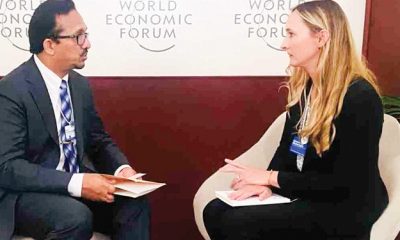
 Features5 days ago
Features5 days agoHandunnetti and Colonial Shackles of English in Sri Lanka
-
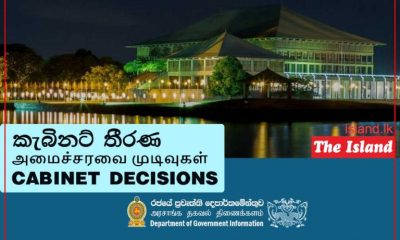
 Business4 days ago
Business4 days agoCabinet approves establishment of two 50 MW wind power stations in Mullikulum, Mannar region
-

 Business7 days ago
Business7 days agoSri Lanka betting its tourism future on cold, hard numbers
-

 News7 days ago
News7 days agoJetstar to launch Australia’s only low-cost direct flights to Sri Lanka, with fares from just $315^













